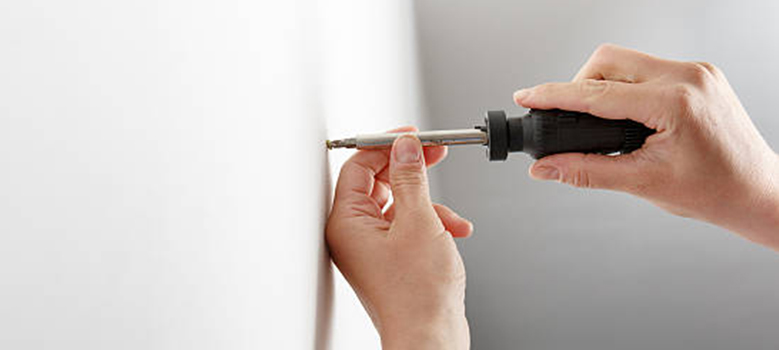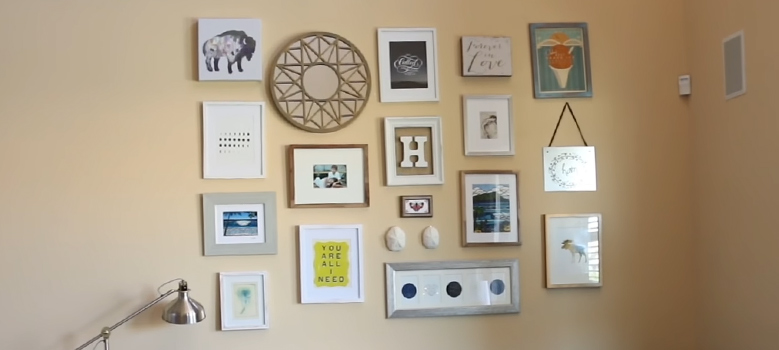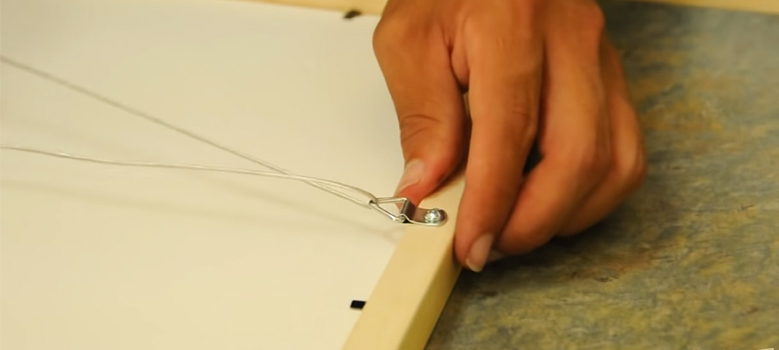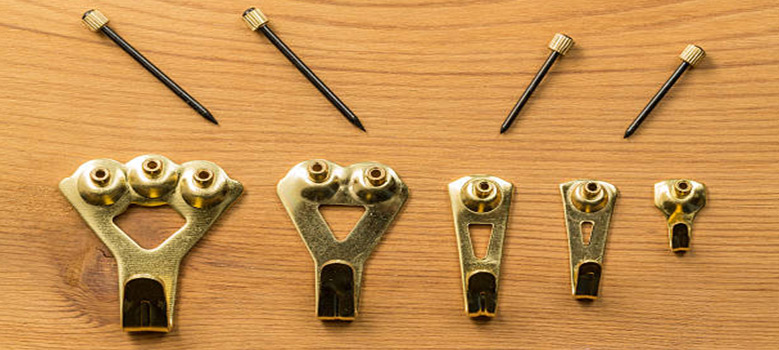Self-threading anchors do not require pre-drilling holes because they are self-thread- SIMPLE!
Using a nail to make an indentation on the mark is not required, but it is acceptable if desired. This indentation will be used to hold the anchor tip as you begin screwing the anchor into the wall.
Now here’s the question, what is the best way to screw a nail into a wall without a drill? YES! You definitely can, my friend.
An Overview of How to Set a Screw Without a Power Drill
- You need to find a nail. The nail should be smaller than the screw.
- Puncture your wall. Make sure that the nail is driven far enough in the wall to leave a hole.
- Take out the nail. Put the screw in and remove the nail.
Steps to Screw into Wall without Drill
Step 1: Gather Your Materials
Before you begin, ensure you have the following materials:
- Drywall anchors
- Phillips screwdriver
- Screws
- The item you want to hang
Step 2: Locate a Suitable Area
Avoid installing a drywall anchor directly into a hole where a screw previously pulled out. Leave at least two inches of space between your new installation point and the old hole. The surrounding drywall may have weakened, so this distance is crucial for a secure anchor.
Step 3: Start a New Hole
Using a regular Phillips head screwdriver, create a new hole in the drywall. Apply gentle, consistent pressure while turning the screwdriver back and forth. Be cautious not to apply excessive force that could penetrate or damage the drywall.
Step 4: Insert the Drywall Anchor
Place the drywall anchor onto the tip of the screwdriver. Then, insert it into the hole you’ve just created in the drywall. Push it through the hole until it’s flush with the wall’s surface.
Step 5: Tighten the Anchor
Ensure the drywall anchor is snugly fit in the hole without over-tightening, as this can cause it to tear out. Adjust it until it sits flush with the drywall.
Step 6: Hang Your Item
Now, you can proceed to hang your object on the drywall anchor. Insert the screw through the item’s mounting hole and into the drywall anchor. Use your fingers to ensure it’s securely in place.
Step 7: Final Adjustment
Leave the screw protruding from the wall by about a quarter inch. This slight protrusion ensures your item is securely attached without pushing it too far from the wall. Use your Phillips screwdriver to tighten the screw until it’s in the desired position.
Frequently Asked Questions ( FAQs)
Can You Hammer a Screw Into a Wall?
You must not screw straight into the drywall. Hanging heavy pictures securely requires picture-hanging hardware. Without an anchor, a screw inserted only into drywall will not hold into it permanently. Sooner or later, it will simply pull itself back out.
Can I Use a Screwdriver Instead of a Drill?
Yes, you can. Screwdrivers can serve as drills. You can’t get the same functionality and capability from a screwdriver as you can from a good power drill. Additionally, you must use the right screwdriver. However, it is true that drills and screwdrivers serve similar purposes.
Even you can use a screwdriver to screw into a screw in wood. For your better understanding, you can watch this video.
Why Won’t My Screws Stay In the Wall?
Screws tapped directly into drywall typically leave behind powdered drywall that must be repaired. You may need to install anchors if wall studs can’t be found in the right spots to support your mountings. Anchors can come loose, however. Wood holds better than anchors, no matter how strong others are.
Final Words
So this is all about screwing into the wall without tiresome drilling. I firmly believe that you found this article helpful. If you have any queries related to this topic, feel welcomed to comment below. You may like to read more about hanging pictures and the uses of picture hanging hooks. Happy reading!





